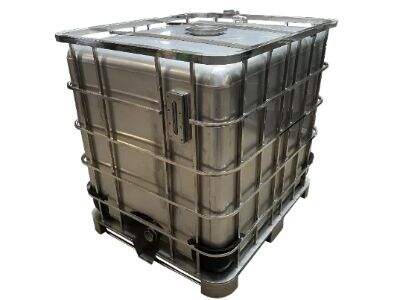In industrial environments, how and what you store your chemicals in or handle liquids or chemicals will make a big difference in terms of cost and efficiency. At Derksen, we realize that making the right choices in order to improve costing and optimize your business processes is incredibly important. Featured post. In this article, we will look into a cost analysis of stainless steel vs. plastic IBC tanks – understanding when they will work for you, their ease of use, and overall requirements, as well as providing some notable points for consideration when choosing between the two.
Why They're Worth the Investment
Each type of IBC you choose will have its own pros and cons that justify the purchase. Conventional stainless steel tank vats can last a long time in use without deterioration. They are corrosion-resistant and can be used to store a variety of liquids without rusting or breaking down. Plastic IBCs, meanwhile, are light and portable, allowing for versatile use.
Metal
co2 liquid tank are more expensive upfront, but they have a higher life expectancy and less maintenance than plastic. This is why, although the initial cost is higher, it's cheaper to own over time due to less maintenance and repair. Likewise, the plastic tanks are initially less expensive; however, they may prove to be more maintenance-intensive and, in the end, could cost you both time and money.
Are They Really Cost-Effective?
The analysis between custom water tanks plastic tanks, as well as their cost effectiveness, requires consideration of other factors, not just the original purchase price. When considering the true cost of ownership throughout the life-cycle of a storage vessel (including maintenance, repair/replacement costs), it’s not uncommon to realize that there is value gained through choosing stainless steel tanks in the long-term.
Stainless steel water tanks are much longer lasting than plastic and are resistant to corrosion, meaning they don't need to be replaced as often. This leads to scrutiny of total costs over time, which in turn sees tank liquid storage tanks emerge as a more economical straight-up investment for businesses seeking sustainable and dependable liquid storage solutions.
Plastic vs Stainless Steel IBC Totes
Characteristics of stainless steel and plastic IBC tanks that set them apart for various uses. Corrosive Storage Stainless Steel Tanks are perfect for storing such materials, particularly those naturally found in higher pH environments or those that need to be food grade. Plastic tanks, on the other hand, are suitable for non-corrosive chemicals and provide portability as well as easy handling.
Stainless steel tanks are thicker and stronger when compared to a similar tank in galvanized steel, which makes them an exterior technology that you can rely on in the dry and highly aggressive nature of light oils. Plastic cisterns are less durable but tend to be cheaper and more versatile, good for temporary storage or insuring against short-term variation in demand.
Things to Think About When Deciding Between Stainless Steel and Poly IBC Tanks
If you're trying to choose between stainless steel and plastic IBC tanks, keep in mind that a number of considerations should be evaluated when selecting the perfect fit for you. Think about the liquid or chemical stored, the environmental conditions in storage conditions and the life expectancy of tanks.
If you have a long-term storage requirement for corrosive or sanitary liquids, then perhaps stainless steel will offer the longest lifespan. And yet if you need a versatile, portable, and affordable tank that will resist rust on non-corrosive materials, the plastic tanks might be a better option for your purposes.
We know the unique challenges in industrial liquid storage, and it’s our goal to provide you with exactly what you need. You can decide whether a stainless steel or plastic IBC tank is the best fit for your work needs by taking into account the considerations of cost and why stainless steel costs more than plastic.

